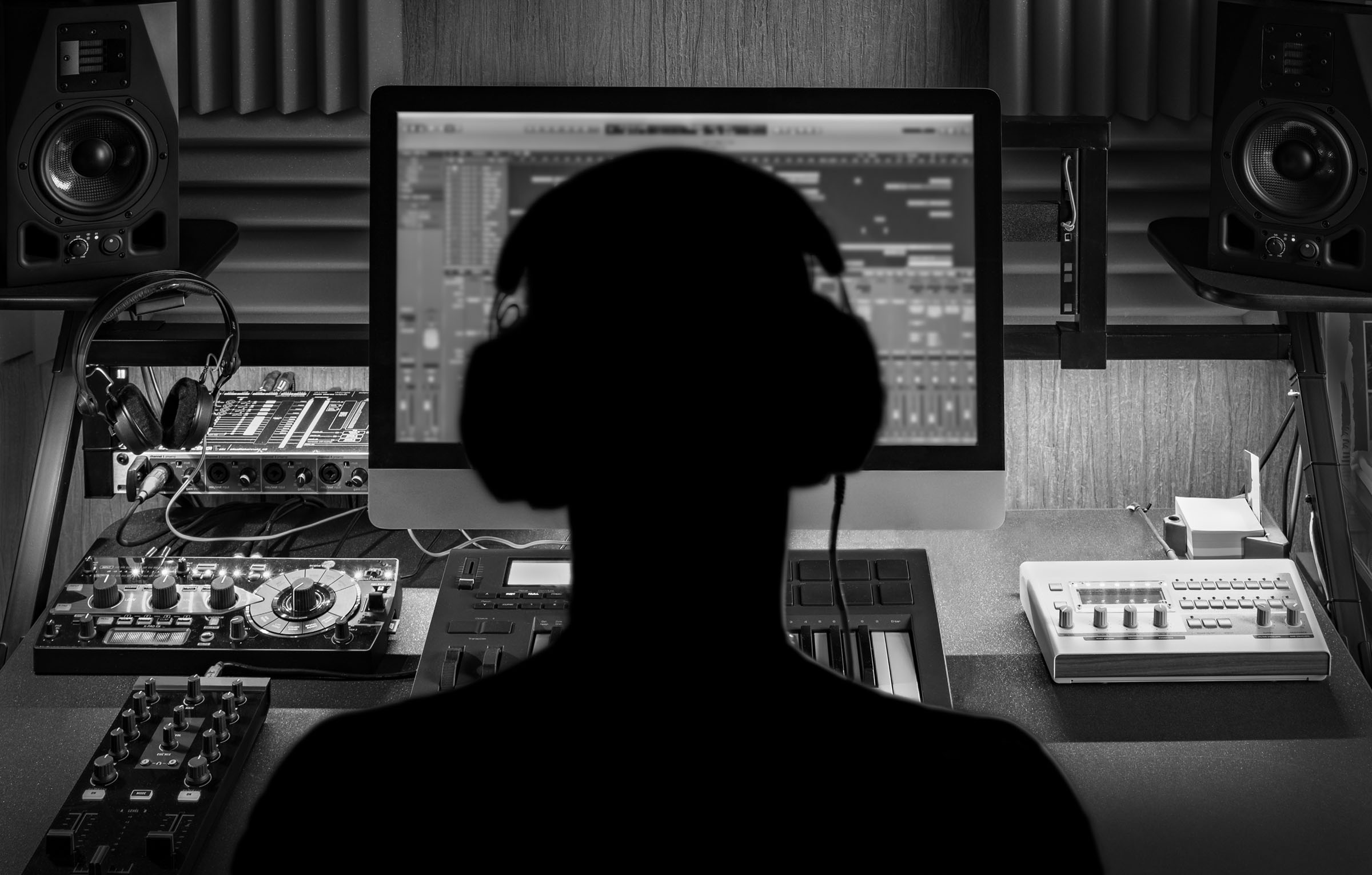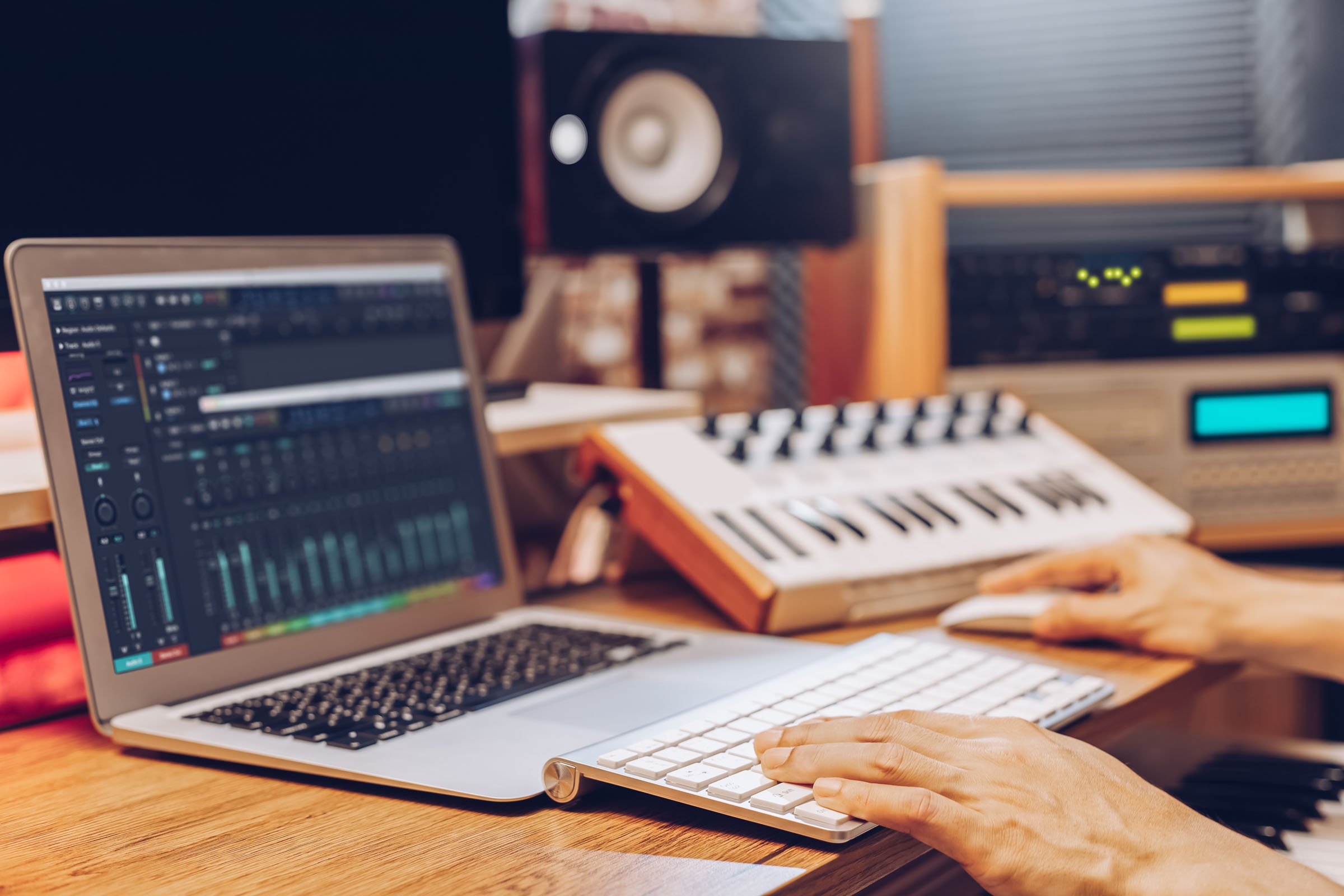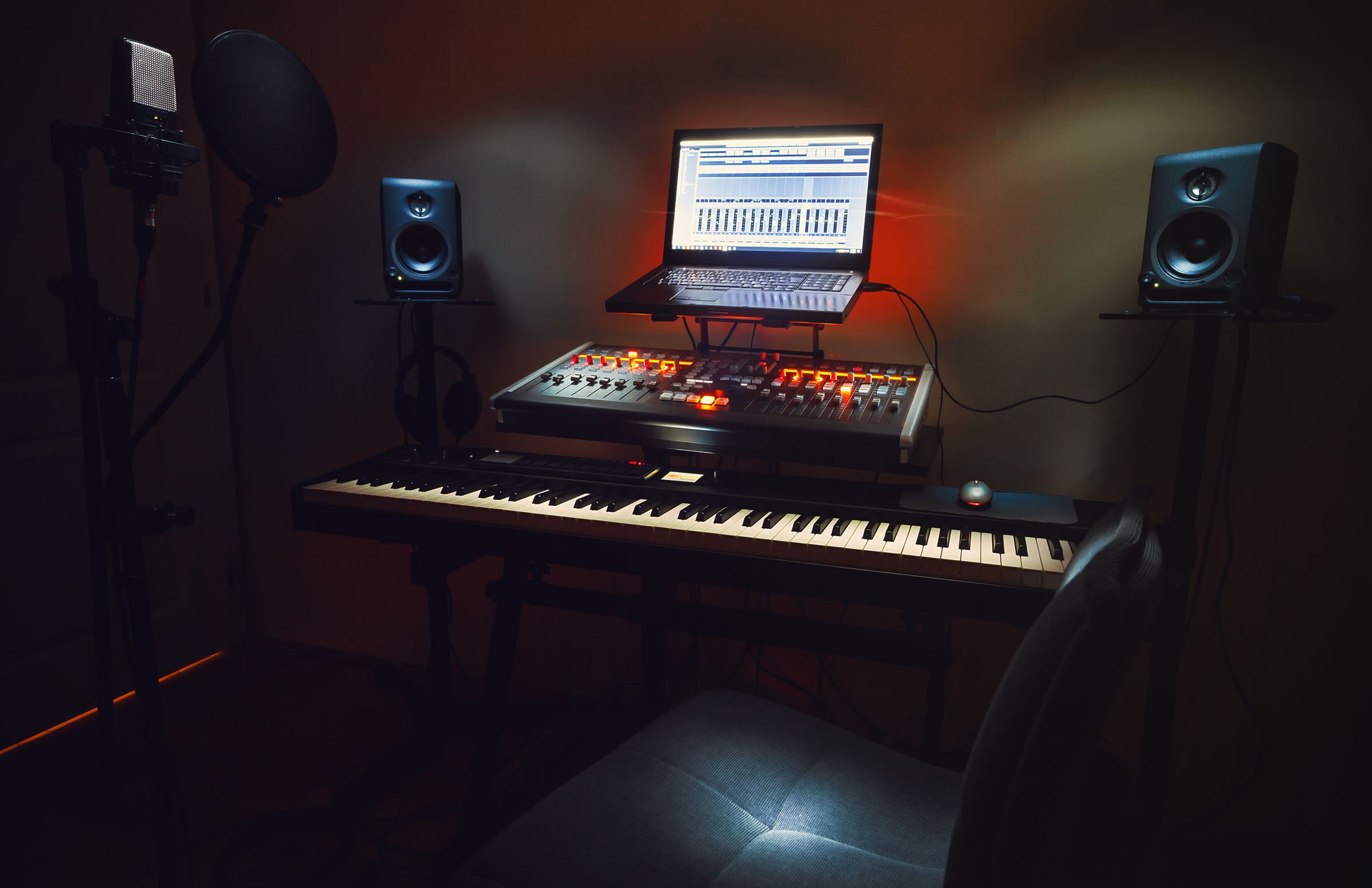Where to set up your home studio
You'll need peace and quiet while working at your home studio. The best would be to use a separate room. If you live in a small appartment or house and don't have a spare room, set it up in the corner of a less frequented room, at least. This part of the household should be quiet, so you can focus. In many cases, not even headphones will help you, because they can't filter out every single noise.
Don't forget that a home studio needs to contain specific equipment. It'll take up some space, that's why you should avoid setting it up in a living room or a study. It could stand in the way or you could limit other family members in their activities.
Since your home studio will be equipped with devices like computer, monitor and microphone, don't forget to buy a table that is large enough. It should come with extra storage space like drawers and cabinets. You'll store all the little essentials.
Do not cheap out on your home studio
No matter how much you're into music, you shouldn't be frugal when it comes to a home studio. Cheap studio equipment won't produce high-quality sound or smooth operation. A freezing computer or neverending loading of files will get on your nerves soon.
If you're a beginner or someone who just wants to use a home studio in their spare time, opt for the middle ground. You can come across high-quality equipment for a reasonable price.
In order to enjoy working with sound, you don't need professional equipment. However, the cheapest option may be useless as well.
How to set up a home studio?
If you're asking how to set up a home studio, the answer is simple. If you're a beginner, you only need three basic pieces:
- studio microphone,
- audio interface,
- studio monitor.
If you eventually decide to make a living out of music or to level up your hobby, you can also get:
- computer with higher performance,
- software,
- other equipment.
Pro tip
For beginners and casual users, a computer with average performance they already have at home is usually enough. For more complicated operations, you'll have to get something capable of higher performance.
Studio microphone
Let's start with the very basics, which is a studio microphone. Choosing is quite easy. You pick from four different types, each is suitable for something else:
Dynamic microphone
Dynamic microphones are mostly used on stages for recording singing or guitar and bass guitar amps. They're not that sensitive to surrounding noise, which makes them great also for beginners. Inside, they have a membrane that vibrates in response to sound waves.
These microphones have a powerful output and a very light structure. They're easy to use and you will find them at an affordable price.
Condenser microphone
Condenser microphones are perfect for professional studios and experienced musicians. They're mostly used for recording singing and acoustic instruments. If you play the violin, piano or clarinet, you should have one.
Since this microphone type is very sensitive, it should be used in spaces without loud background noise.
USB microphones
USB microphones can be considered a subtype because they belong to the cathegory of condenser microphones. Unlike the standard ones, they are connected to the computer via a USB port. That enables you to start recording singing, spoken word and sound of a musical instrument within seconds.
A great benefit of USB microphones is that you don't have to have a sound card in your computer. That makes it perfect for recording podcasts and YouTube videos.

Ribbon microphone
Also ribbon microphones are considered a subtype. In this case, a subtype of dynamic microphones. They're kind of vintage. Their main advantage is that they can pick up even the smallest details and they offer much more realistic sound.
Ribbon models are known for their slimmer and longer bodies. They're perfect for recording singing or acoustic musical instruments.
Audio interface
Once you have a microphone, you can add another piece of basic equipment. It's an audio interface. It is used to record sound. Besides microphone, you can also plug in a guitar, violin or any other musical instrument.
Audio interface transforms analog signal in a digital track. It is transmitted into a computer where it can be edited in an audio software. It's totally up to you which software you'll be using. There are plenty of choices. Some are paid, others are free, but with limited features. For a beginner, free software is good enough, but you should upgrade to a premium version later on.
You have to consider many aspects when choosing an audio interface, but the most important one is the number of inputs. If you plan to play just one musical instrument, e.g. learning to play a guitar and also sing along, two inputs are enough. However, if you want to play several instruments at once, or even with other people, get a model with multiple inputs.
Studio monitors
Studio monitors are professional speakers made for monitoring the sound down to the last detail. If you are thinking about how to set up a home studio, you'll definitely need at least one. Some people get two pieces at once, which ensures the most precise monitoring possible.
There're several types of studio monitors and choosing the right one is quite complicated. You have to consider not only the price and dimensions, but also which outputs they have and what quality they offer.
Computer
If you prefer a laptop, go for it. Most professionals work with powerful and big desktops. Large display enables you to see every minor detail. Alternatively, you can opt for a laptop and connect it with a large external display.
Pro tip
If you want your computer to perform really well, choose a model with at least an i5 processor.
Software
These are audio and editing softwares which you'll use to edit all the recorded sound. One of the classic softwares is Cubase. It's easy to use and you'll get into it easily.
Professionals and musicians producing electronic music use Ableton Live software. It features also advanced options so you'll need some time to get used to it. However, it's still fairly simple.
Accessories
If you want to make your home studio more cosy and practical, get accessories. Firstly, get all the cables needed to connect the devices, like microphones and monitors. After that, go for microphone stands and headphones with professional sound and noise cancellation features.

Create your own home studio
Building your own home studio doesn't have to be complicated. All you need to know is what exactly it needs to have and what accessories you should get. Enjoy your creative moments without leaving your home. Make new music, play musical instruments and take pleasure in great results.
 Musical Instruments
Musical Instruments

 Water Sports
Water Sports


 Sport
Sport


 default
default



